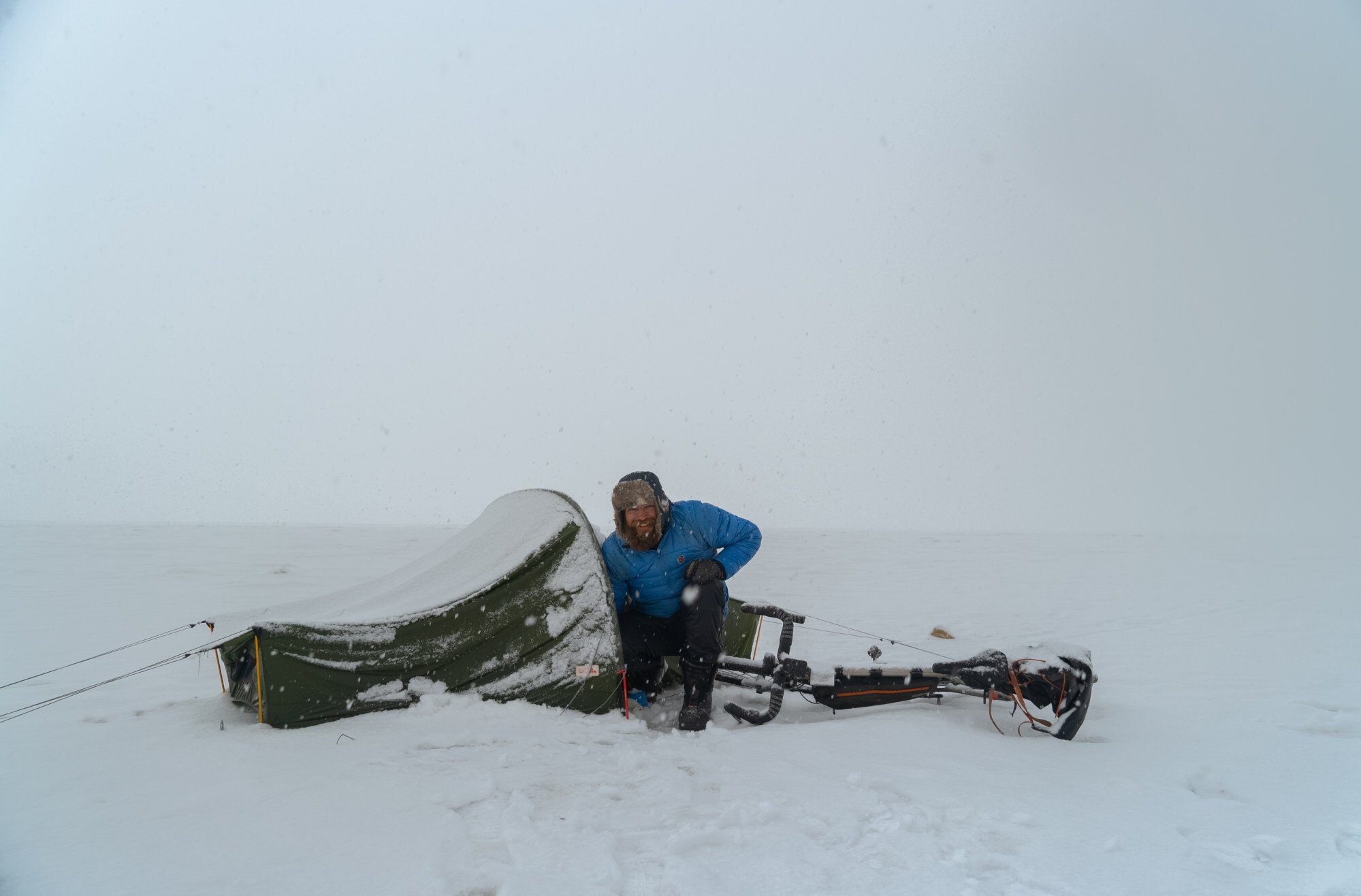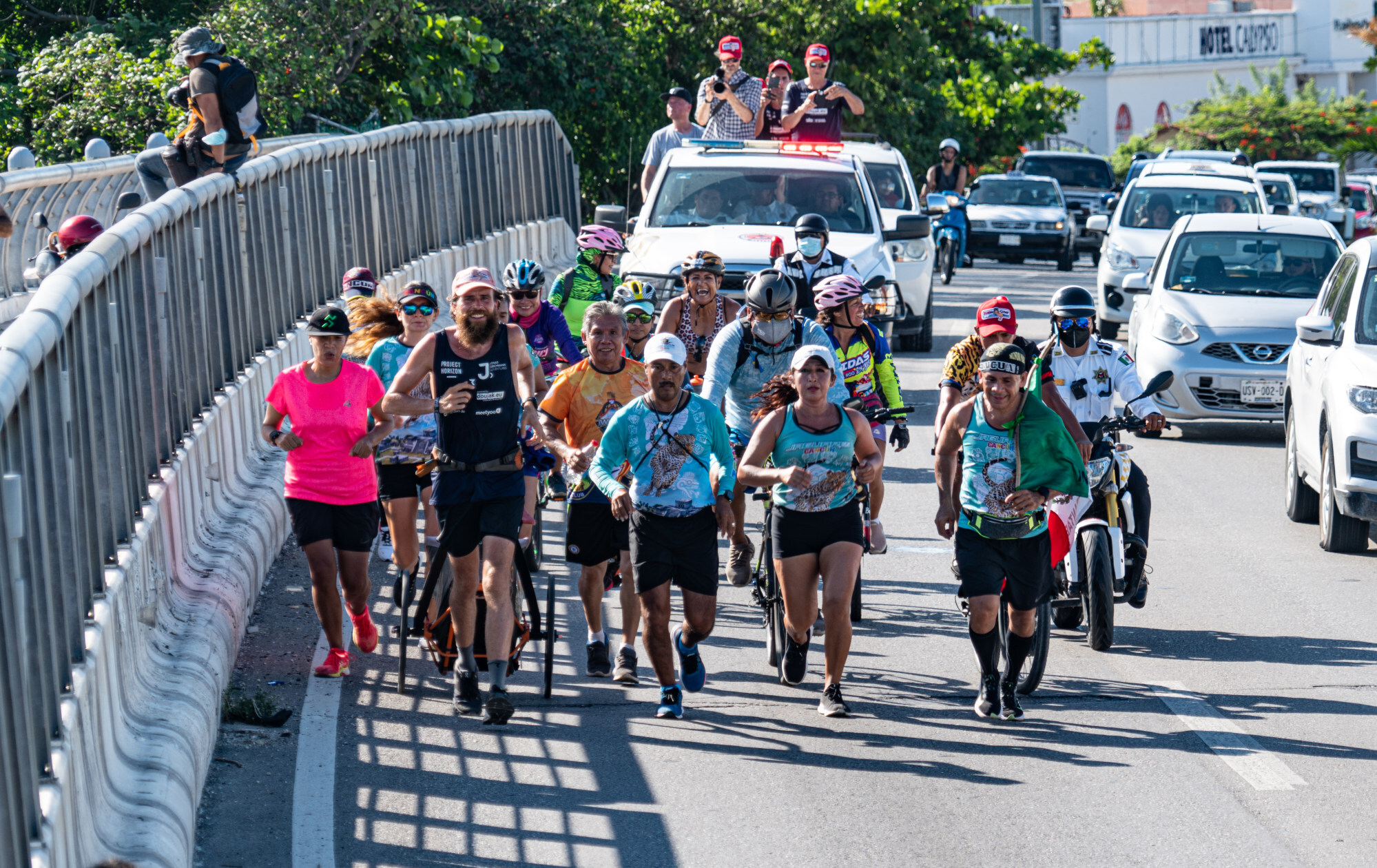
Selfies with Mexican cartel, dodging giant Russian trucks – Jonas Deichmann takes on Forrest Gump-like following during global triathlon
- German adventurer Jonas Deichmann has completed a 14-month long triathlon around the world, swimming, cycling and running in extreme conditions
- The record-breaking ultra athlete covered around 40,000 kilometres, including 456km of open water swimming and 120 marathon runs
It was early December and German ultra cycling adventurer Jonas Deichmann pedalled into the bleak wintry streets of Munich. Some 429 days earlier he had seized a lull in the pandemic to take on his long-planned and delayed “around the world triathlon”.
The highly accomplished ultra cycling record breaker had planned a self-supported bike packing circumnavigation of the planet. There would be around 40,000 kilometres to cover in all, and he aimed to split the journey into Ironman triathlon disciplines. This meant incorporating 456km of open water swimming and 120 marathon runs.
After riding over the Alps in winter he then swam down the coast of Croatia and pedalled off with his camping gear through Turkey, which was when we last caught up with him in February of 2021.
At that time his preferred route option of continuing through South Asia and China and then sailing to the United States to run across the country was rapidly closing up. He was forced to turn tail and seek an alternative route.
The only viable option was to try to cross Russia and then see what kind of shape the world was in. After a great deal of persistence he was allowed to enter Russia by land from Ukraine, just in time to cross Siberia during winter. During his Eurasia record ride a few years earlier he had terrifying and relentless encounters with Russian trucks on the route, and this time it was midwinter.
“It was safer in terms of traffic this time,” Deichmann said. “This was not a speed record, so in the western part of Russia I was able to use small roads, which were in a horrible condition, but I did it to avoid being killed.”

Soon enough he ran out of side road options. “After the Urals it was still dangerous, but it was much better than in the west,” he said. “When I got on the Trans Siberian Highway it was midwinter. It was minus 20 degrees Celsius, but it was a dry cold and I wasn’t sweating, so I can handle that.”
It was when winter eased that the going got really tough. “The worst part was when spring came. It was around minus one in the daytime and then down to minus 15 at night. Every morning my shoes would be wet and frozen, which was not good.”
The Siberian conditions didn’t seem to slow him down too much. “There were days when I struggled to cycle 120km because of the weather. On other days I would do 230km, and on good days I would aim for 240-280km.”

When Deichmann reached Vladivostok it was late spring. Because of a partly frozen ocean and closed borders he once again faced a conundrum. “I wanted to run across the USA, but because I had been in Sudan during my Cape to Cape ride I had to go through security checks at a US embassy, but owing to Covid they were all closed.”
There was still one country, though, that had remained open throughout the pandemic, and it proved to be an exhilarating experience. “Mexico was the only place I could get in, and it turned out to be the best ever,” he said. “I wanted to sail there because it was C02 neutral, but there was no choice but to fly.”
He took to his feet and ran for 120 consecutive marathon days from coast to coast across Mexico. He towed a trailer carrying his belongings through the high mountains and cartel land and became a national folk hero, and was fondly termed “Forrest Gump Aleman”, the German Forrest Gump.

However, he was not alone, and it was his co-star who stole the show. “It got pretty crazy when I met La Coqueta, a street dog who started following me,” said Deichmann. “She was waiting by my tent every day and followed me all along. When Mexican TV started following me I tried to find her a home, and she was taken back to a small town and given a huge reception. It was incredible what happened in Mexico.”
In the high mountains he ran into the cartels. “They stopped me in the Sierra Madre and said; ‘Jonas, we were waiting for you. We are the bosses in this area and we will take care of you. Don’t worry, you are very welcome here and we follow you on Instagram. Can we have a selfie with you?’”
There was a police escort following him for much of his journey, and armed policemen also ran along with him. “At some point there were 30 of them with guns running with me and shouting their military songs, which got a bit much,” he said.
Hurricane season and Covid-19 restrictions also thwarted his attempt to find a sailing boat back to Portugal for his final 4,000km ride across Europe. “The first time I really felt I was home was on my first day in Germany. It was dark and I rode into a small village; there were Christmas lights, it was snowing and the church bell was ringing. It’s a very specific sound to southern Germany, which was great.”
Even before he arrived home Jonas was already planning his next adventure. “In 2023, I will start again. It will take at least as long as this one and nobody has ever done it before. There will be mountains, and it will involve temperatures from minus 40 to plus 40 degrees.”
A big part of being a modern day adventurer relies on sponsorship and attaining a mainstream and social media presence, which he manages himself on the road. “I do this on my own, but I don’t think I can do that in the future. It’s too much work for one man.

“Pictures I edit in Snapseed, but videos are too big to edit so I send everything to Germany and they edit and send them back. I have to find a hotel with good Wi-Fi and do everything while I’m there. I transfer from the GoPro to my phone, and also back up everything online.”
“For writing social media posts I do everything on my phone. I use tools like Insights of Facebook and Instagram for hashtags.”
Keeping the power on is essential. “Most important is to have a big power bank, to power my two GoPro 9 cameras and mobile phone, and with just those I manage pretty well. It was very challenging in Russia, because it was so cold.”
For short sectors he did have a film crew along, but most of the time it was a one-man show. “I use the GoPro on a selfie stick in time-lapse mode for photos, and in 4k for the videos.”
He plans his routes using the Komoot app and transfers them using GPS devices. “I also use a Wahoo Element GPS watch.”
The conditions also meant he swapped phones on the go. “I was using a Swift (German brand) for most of the way but swapped to a CAT phone because of the cold. The battery is more rugged, and it works in the extreme cold.”
By sending regular voice messages and a monthly Skype call to a ghost writer there was also a book about the adventure, The Limit is Just Me, launched by the time he finished. This immediately became a hit in Germany and was the highest-selling new book in the country within days.
